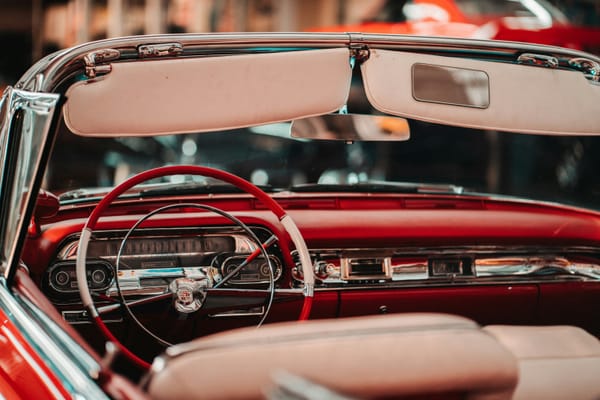Note taking with Obsidian

After starting to use spaced repetition more actively and being more consistent with my journaling, now I've tackled improving my note taking skills.
Over the last couple of months, I've read about various note-taking methods, different approaches and diverse goals for them and they helped me change my perspective on collecting ideas.
My previous approaches to taking notes
While I was still in school, I didn't take too good notes. I guess the Romanian educational system is not set up to encourage that kind of critical thinking which leads to taking good notes. In most classes, the teacher would dictate a lesson, I would write that down and then memorize it, without needing to create my own summarized version of the lesson.
Then I took notes in Google Keep. When it came out, I was impressed by how simple and snappy it was, compared to Evernote for example. I've used it for around 6 years, so I have a lot of notes jotted down there. But Keep doesn't offer good ways to organize notes, having only tags and search. But to search, you have to remember something to look for, so it's almost impossible to find notes which you have forgotten.
As I've started moving my notes from Keep to Obsidian, I found a lot of old notes which I had totally forgotten about. Some of those notes were ideas I had, but I never followed up on them. Looking back they were good ideas: I know because in the meantime other people have implemented them.
Goals of a note taking system
A goal of a note taking system should be to store information, so that your brain can do more fun/useful stuff.
But another goal is to help you connect ideas, even from different domains. As you read things in books, blogs, or come up with ideas on your own, eventually some of them will be related and can be combined to make something even better. The note taking system should facilitate creating these connections.
It should also help you process your notes. A note is not a static thing. It's not something you just write down and then never touch again. Almost all ideas will eventually need refining. When you read a book and find something noteworthy, you write some notes, but in time you find that you can reword it better, as you understand things better. For your own ideas, in time you add something; you cut some things, hopefully making them better and then you create something with them.
Lastly, the note organizing system should help you organize and browse your notes. It should encourage serendipitous rediscovery of forgotten notes. It should help visualize them. It should make it easy to see all notes that are related to a certain note or to a certain topic.
Enter Obsidian

Obsidian is a new desktop app for creating a "A second brain, for you, forever.". It's quite new, it was released publicly two months ago and it's not even at version 1.0, but development is progressing quite quickly, with a new version coming out almost weekly.
Obsidian is built around Markdown files, which means that the notes are portable and won't get stuck in an old program, should the company go out of business. It enhances the Markdown syntax with the some shortcuts for creating connections between pages using [[name of other page]] syntax. You can see for each page what other pages link back to it. There's also a way to embed one file (or part of a file) into another one.

One cool looking feature in Obsidian is the graph view, where you can visualize how your notes are connected. This leads to some interesting looking "constellations".
There are also plugins available. For now, the API is internal, so all the plugins are made by the same company, but they say that once they reach 1.0, they will make the API public.
Because Obsidian is based on Markdown files, you can store them wherever you want and you can sync them across devices with your favorite syncing tool. So far, I've used GitHub.
One disadvantage is that it doesn't have a mobile app so far (or a remote interface in general). On one hand, it's not a big issue for me, because my goals for notes require a big screen and a nice keyboard. In practice, I still like to have access to my notes even on the go, so I just use an Android Git client with a Markdown editor. Maybe one day I'll change this to expose my notes as a static website.
My note taking workflow
My workflow is inspired by (but only inspired, not fully copied from) the Zettelkasten method of Niklas Luhman, which is the trending note taking framework du jour, sprinkled with ideas from Tiago Forte and others. When my note-taking workflow grows up, it wants to be like Andy Matuschak's notes.
I have a loose categorization of my notes into folders. I'm not very strict about them and I don't want to spend much time organizing a hierarchy. Some notes also have tags (simply words prefixed with # and Obsidian is smart enough to start a search for them if you click on one).
Many of my notes don't start their life in Obsidian, but in my bullet journal. When I hear something new, or I read something interesting, often my bullet journal is closer to me, so I jot down the main ideas there. Then, when I get to my computer and I have time I copy it into Obsidian and I flesh out the ideas fully. Then I try to find any other notes that are relevant and add connections to them.
One thing that I try to do is to make my notes my own. This means that if I read an interesting article, I don't just copy paste the interesting parts, but I actually reword them and write them down as I understood them. This helps both comprehension and retention.
For certain topics, I create index maps, where I list all the notes that I have related to that topic. So notes belong to multiple index maps, because they are relevant in different areas.
As I add new notes and create connections between them, I end up revisiting old notes and updating them. Sometimes it's with a negative update (it didn't pan out, it was a wrong idea), but sometimes it's a positive one (a further development or something similar someone else has done).
The most interesting part is when notes from very different areas start to "touch" each other. Because of the graph view, it's easy to see how close notes are to each other. I also use the graph view to see what notes are isolated and then I try to find them a place. As you can see in the above screenshot, I still have a lot of work to do.
So far I have added 160 notes in Obsidian, so it's a small knowledge base. I still have many notes in Google Keep to move over. But I feel like Obsidian has already helped me (I feel on top of my notes) and I hope something nice (and useful) will come out of it.
Top photo by Pogány Péter - Egen Wark.
I’m publishing this as part of 100 Days To Offload - Day 31.


